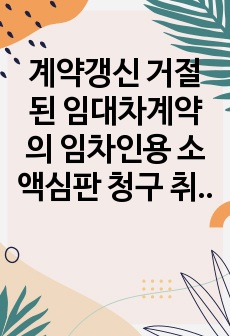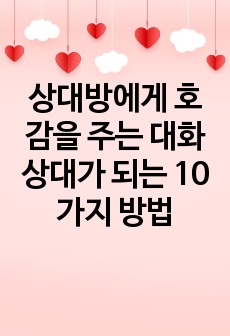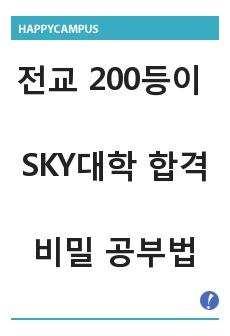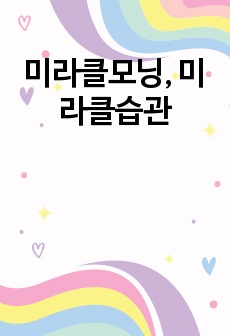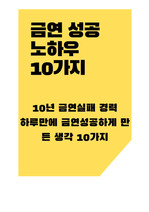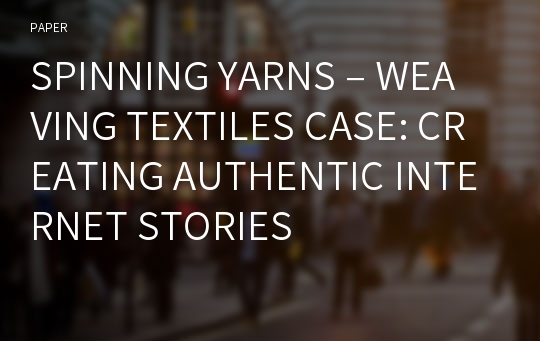SPINNING YARNS – WEAVING TEXTILES CASE: CREATING AUTHENTIC INTERNET STORIES
* 본 문서는 배포용으로 복사 및 편집이 불가합니다.
서지정보
ㆍ발행기관 : 글로벌지식마케팅경영학회(GFMC)
ㆍ수록지정보 : Global Marketing Conference
ㆍ저자명 : Kaye Crippen, Patricia Mulready
ㆍ저자명 : Kaye Crippen, Patricia Mulready
영어 초록
Traditional textiles -- especially hand-woven ones -- have long been items of trade throughout the world. Notably, the Chinese shipped only finished textiles or cloth over the Silk Road to multiple trade centers en route to Europe. As early as the 16th century textile designs were customized to suit market needs; i.e., trading companies had Indian hand-woven naturally dyed textiles customized with motifs and colors that appealed to their Thai or Indonesian customers. These marketing and product development practices were demonstrated in "Interwoven Globe", the Metropolitan Museum of Art’s recent large exhibition and catalog (Peck, 2013). What are Traditional Textiles? Textiles were considered precious before they were machine produced. Today, people seldom understand how difficult it is – the time, effort, and cost – required to make hand-loomed textiles. The industrial revolution allowed textiles to be produced rapidly for the mass market at relatively low price points. Traditional textiles include a variety of textiles using historical or traditional production techniques. This paper examines hand-woven textiles using traditional hand-looms either backstrap or floor. Traditional textiles also encompasses felts, embroidered textiles, and batik textiles which are resist dyed -- the base cloth in this case is commercially produced. Some textiles – as cloth or those made into garments – are imbued with significant cultural meanings such as protection, luck, familial relationships, tribal membership, etc. These often have religious and magical meanings. Such textiles are often reverently passed down to descendants and can be required parts of ceremonies, such as the geringsing double ikats worn in many of their sacred rituals i.e. Sabah Usamba held in Tenganan Pergerinsingan, Bali (Crippen & Mulready, 2001, 2012). Traditional textiles continue to be used for lifecycle and religious ceremonies throughout Southeast Asia (SEA) including the many island cultures of Indonesia; these created some ongoing demand for continuation of textile traditions. Over the past few decades increased scholarly activities followed by increased cultural tourism expanded demand for newly made authentic contemporary traditional textiles. The paradox of increased demand simultaneous with few weaver made traditional textiles more valuable and created new opportunities for reviving traditional weaving. More newly woven traditional textiles were produced and generally sold in the locales where woven. In the 1980’s, increased tourism to Asia, Southeast Asia (SEA), and other areas as well as a larger expatriate community in SEA brought a much greater awareness of textile traditions to people previously unfamiliar with them. Many tourists wanted something more than a T-shirt to remember their trip so souvenirs diversified in type and quality/price points (Crippen & Mulready, 1995). The sale of authentic contemporary textiles woven using traditional techniques started to increase. Many organizations supported continuation of such traditions. Today more traditional textiles -- both antique and contemporary -- are for sale on the internet. This has the potential to expand the market for contemporary traditional textile products. A web-enabled global audience interested in traditional textile end products such as scarves, wall-hangings, pillows, etc., has the potential to expand demand. Lee and Littrell (2003) discuss potential problems when expanding from local to web-based global markets for cultural products. Traditional textiles would be considered a cultural product. Today, a global revolution is in progress which allows small companies – including cooperatives and others – to directly market to the global consumer. Telling their stories via the Internet brings attention and authenticity to their products, hopefully increasing sales and keeping textile traditional alive. The purpose of this exploratory research is to examine websites selling traditional textile products to determine how they demonstrate authenticity for contemporary traditional textiles. Two case studies from Southeast Asia (SEA) are presented to illustrate how storytelling techniques support such authentication efforts when marketing traditional textiles on the Internet. Authenticity Concepts of "authenticity" range from subjective producer/consumer evaluations -- sometimes with no basis in reality-- to highly technical specifications set by law or manufacturer's associations. A textile example of the first one is a so-called batik dress which in actuality has a surface printed design meaning that it is not authentic batik. Authentic batiks use wax or other substances to resist or prevent dyeing in covered areas when dyed. The terms batik tulis is used in Indonesia and Malaysia when the resist wax is drawn by hand; whereas batik cap (chop) designates stamped wax process. Machine printing requires no waxing and is faster and cheaper. Today, there is a market segment interested in authentic textiles and crafts (Anderson & Littrell, 1995). Textile study groups, tours, publications, and internet websites help to educate consumers interested in authentic textiles. Consumers vary in what aspect/s of authenticity they find interesting (Littrell et al, 1995). Uniqueness, workmanship, aesthetics, use, cultural and historical integrity (including age and documented provenance), creativity, and genuineness are all important. "Spinning a Yarn" Storytelling -- sometimes called "spinning a yarn" - is used to help demonstrate/create authenticity when marketing products. It is frequently used to explain the complex production processes of traditional crafts and textiles. This is often augmented by personally observing and/or viewing photos and/or videos of how traditional textiles/products are made. Many people contributed to the resurgence of traditional textile weaving. Most are unknown and often worked collectively in development efforts. Individuals travelled to remote areas and fell in love with the traditional textiles and the people who made them. Some of these individuals then found ways to monetarily support the people making the textiles -- globalization has made cash necessary to pay for such things as mandatory education and school uniforms. In the 1950s, Jim Thompson, an American, founded his company which continued to expand after his disappearance in Malaysia in 1967. The website Jimthomspson.com uses his romanticized personal history to promote an international market for luxury hand-woven Thai silk textiles. Carol Cassidy, an American found the Lao weaving traditions while serving as a UNDP (United National Development Programme specialist in an apparel factory in Laos. Carol, a weaver, started her business and trained local weavers, developed new products, and maintained quality control standard for her company Lao Textiles. Her website Laotextiles.com is informational only; she does list retail stores that carry her products and her contact information. Internet Marketing Internet marketing allows sellers to tell stories -- actually to tell many stories. Different websites or links within websites can target various consumer market segments. Specialty categories, including various aspects of authenticity can be demonstrated in different ways which can stand alone and/or mutually support one another and the website as a whole. For the consumer who values cultural and historical integrity, a story or page/s can be built around this aspect. With increased interest in fair trade, compensation, and working conditions some companies -- especially co-operatives and non-profits -- often focus on this aspect. Sustainability including environmental aspects often linked to Fair Trade can be easily addressed. The Internet allows consumers to read all of the story or only the parts that interest them the most. It offers a convenient way for sellers to broaden their reach to new customers who might not have the opportunity to travel to the craft or textile production site. This potential must be supported with good website design and operations (Lee and Littrell, 2003). Case Studies: Using Storytelling to Establish Authencity for Internet Marketing of Traditional Textiles This is an exploratory study which attempts to determine what storytelling methods are effective in internet marketing of authentic traditional textiles. The two chosen websites attempt to duplicate the experiences of tourists visiting weavers where they work. The two websites selected for analysis Ock Pop Tok (Laos) and Threads of Life (Indonesia). Criteria for selection included vetting by experts who had visited the in-country facilities and confirmed the websites accurately represent the facilities and their work. Websites were selected that actively support women in development efforts such as training and support-- financial and otherwise -- for women to earn living wages while being able to live near family, support for continuation of authentic traditional weaving, sustainability, environmental sensitivity, etc. Ock Pop Tok Ock Pop Tok (OPT) translates to “East Meets West”; their website Ockpoptok.com uses a banner to describe itself as having Lao Textiles with a tag line of "keeping it alive for the next generation". Lao characters in the background tend to give some Lao authenticity. The home page photographs rotate between a team picture (taken September 2013) of women and men workers -- who all look very happy and excited -- and other photographs. Some have spinning wheels or other tools they use in their work; their textiles are displayed in the background. This page describes their activities and programs as being a Laos based social enterprise working primarily in the field of textiles, handicrafts, and design. They work with women artisans, rural producer groups, and students who can work in their shops. They opened the Living Crafts Centre in 2004 which includes a weaving and dyeing studio, craft school, and an exhibition area. Their website also describes on-site lodging where themed rooms are decorated using their textiles. Their catchy categories for web pages are divided into learn, create, shop, stay, and eat. OPT has a non-profit gallery -- Fibre2Fabric -- which focuses on using textiles as a way to explain Lao culture. Their activities are well documented and the village weaver projects for rural development are described; its goal is to alleviate poverty. Laos has multiple ethnic groups and OPT, in combination with other partners, works training many rural area women to produce handicrafts for poverty alleviation. Their work in 11 rural areas is described and includes photographs. The website also includes a photograph of all their weavers. It would appeal to people who only want to purchase products as well as those who would like to plan a trip where they could not only visit the learning center but also take a class and even stay. OPT discusses their sustainable development policies in depth. Threads of Life Threads of Life (TOL) is described as a privately funded organization dedicated to the preservation, promotion, and marketing of traditional woven, natural dyed, and handmade ritual textiles. Their home page rotates and focuses on nature and culture. Their website Threadsoflife.com includes a list of associates who assist Threads of Life, as well as Balinese employees, with a quote from each. Under the "What We Do" section, they list revitalizing traditional textile traditions, field work, conservation efforts, and supporting women’s cooperatives. The description of supporting the cooperatives is as follows: “Threads of Life works directly with over 1,000 women in more than 35 cooperative groups on the Indonesian islands from Kalimantan to Timor. The common question among these cooperatives is, ‘How do we maintain our culture and identity, and make a living at the same time?’” “Threads of Life helps to answer this question. Our business model uses real markets to reward cultural integrity, promote conservation of the environment, and empower families in some of the world's poorest places to lift themselves out of poverty.” This site is rich in content and photographs which support the written materials. For example, the complete descriptions of the ikat, a technique which ties and dyes yarns before weaving include details such as not only who wove the textile but also who tied the resist yarns and who dyed it. The Threads of Life Textile Arts Center in Ubud, Bali, is their main store. Photographs of textiles with good descriptions and a code number are included from various locations; however, it is unclear how or if these can be ordered. TOL also offers accommodations and small group tours, including those related to traditional textiles. They too offer a newsletter and have a foundation which supports environmental issues. Commonalities and differences between the two websites will be presented including their use of storytelling, photography, ease of purchasing product, pricing, fair trade information, sustainability, and ecological issues.참고 자료
없음"Global Marketing Conference"의 다른 논문
 THE ROLES OF GREEN PACKAGING IN UGLY FOOD PURCHASE INTE..22페이지
THE ROLES OF GREEN PACKAGING IN UGLY FOOD PURCHASE INTE..22페이지 THE IMPACT OF INDUCED AWE ON ETHICAL TOURIST BEHAVIORS5페이지
THE IMPACT OF INDUCED AWE ON ETHICAL TOURIST BEHAVIORS5페이지 A BIBLIOMETRIC ANALYSIS OF SPIRITUAL TOURISM RESEARCH15페이지
A BIBLIOMETRIC ANALYSIS OF SPIRITUAL TOURISM RESEARCH15페이지 SOCIAL NETWORK ANALYSIS AND RESPONSE TIME TESTING: CONS..11페이지
SOCIAL NETWORK ANALYSIS AND RESPONSE TIME TESTING: CONS..11페이지 THE EFFECTS OF PARA-SOCIAL INTERACTION ON ONLINE CELEBR..3페이지
THE EFFECTS OF PARA-SOCIAL INTERACTION ON ONLINE CELEBR..3페이지 THE INFLUENCE OF OPINION LEADERS ON DAILY DEALS USER’S ..3페이지
THE INFLUENCE OF OPINION LEADERS ON DAILY DEALS USER’S ..3페이지 HOW IMMERSIVE RETAILING AFFECTS CONSUMERS’ URGE TO BUY:..6페이지
HOW IMMERSIVE RETAILING AFFECTS CONSUMERS’ URGE TO BUY:..6페이지 KEY TO SUPERSTARDOM IN A GLOBALISED MARKET: THE ROLE OF..6페이지
KEY TO SUPERSTARDOM IN A GLOBALISED MARKET: THE ROLE OF..6페이지 A POST-PANDEMIC LOOK AT TOURISTS’ PERCEIVED COOLNESS OF..4페이지
A POST-PANDEMIC LOOK AT TOURISTS’ PERCEIVED COOLNESS OF..4페이지 EXTRACTING OFFLINE RETAIL SHOPPING PATTERNS: OLLABORATI..5페이지
EXTRACTING OFFLINE RETAIL SHOPPING PATTERNS: OLLABORATI..5페이지










